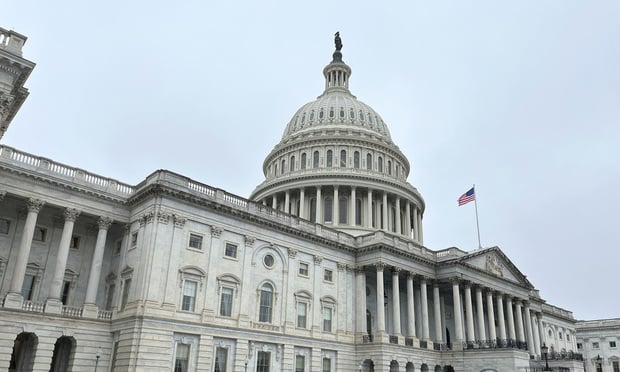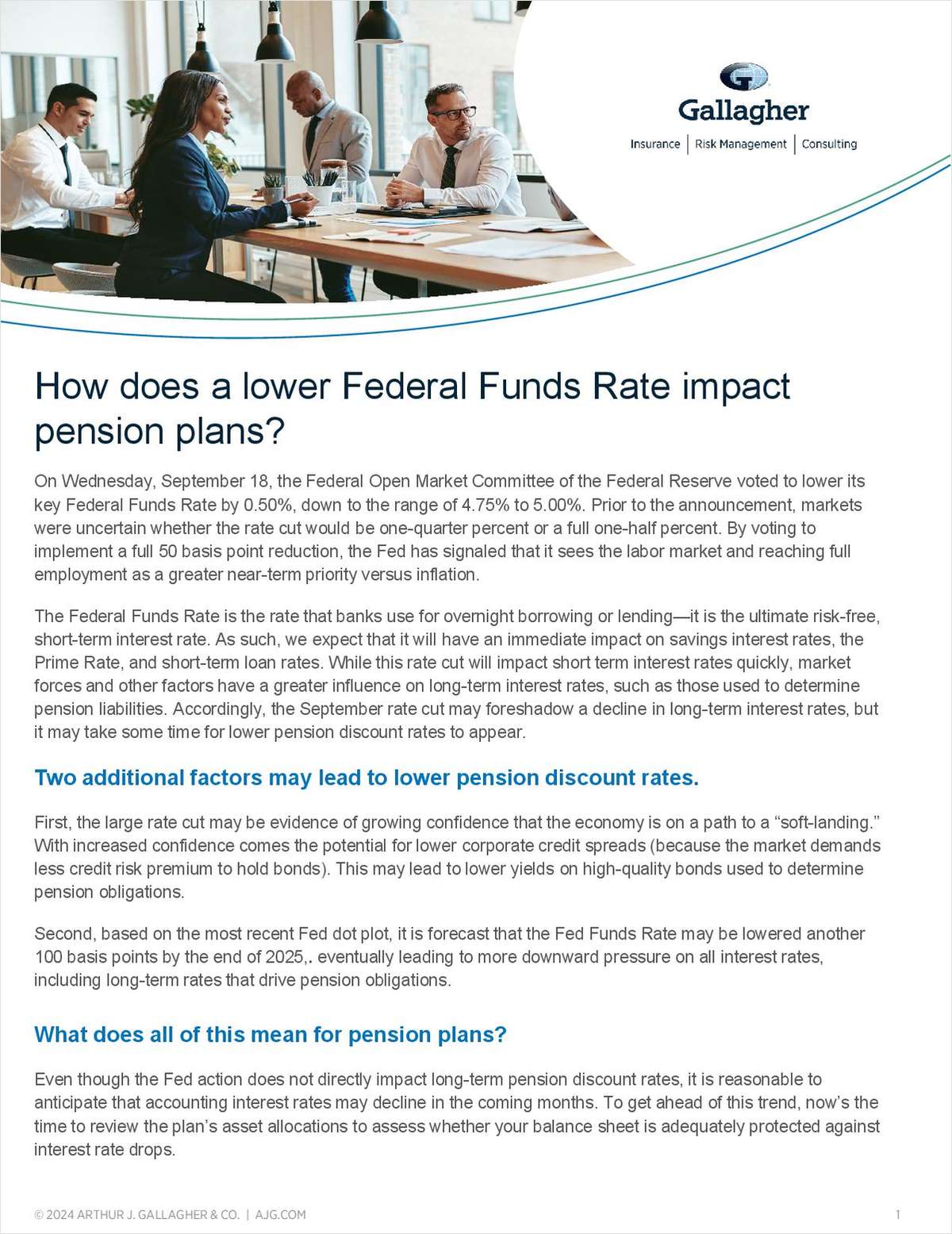Scott Kaplan, senior vice president and head of Prudential’s Pension Risk Transfer business, which now oversees $60 billion of U.S. pension liabilities, says it is by design that he and his team are pacing the surging pension buyout market.
The Pension Protection Act of 2006, which the Society of Actuaries has called “the most significant overhaul to U.S. pension funding regulations since ERISA,” sent a clear signal to Prudential that the pension transfer market was poised to open up, said Kaplan.
The PPA intensified pension sponsors’ funding requirements when plans’ funding statuses dropped below 90 percent, among other things. When the law was passed, the average corporate pension plan was funded at 96 percent, according to the Government Accountability Office.
Then came the financial crisis. Between year-end 2007 and the spring of 2009 the average funding status plummeted to 70 percent.
While it has since improved—Milliman’s pension funding index has it hovering in the low to mid 80s—it is still well below the 90 percent threshold established in PPA.
“As sponsors were suddenly experiencing tremendous and new volatility from markets and regulators, our goal was to establish ourselves as a market leader, well before the Verizon and General Motors deals,” explained Kaplan.
When Prudential inked a $25 billion pension transfer deal with General Motors in 2012, it marked a watershed moment in an old industry. Kaplan says Prudential has been in the pension transfer business since 1928.
The scope of the GM deal—Prudential assumed the pension liabilities for 110,000 participants—was viewed by most industry watchers as a signal that sponsors now had almost a perfunctory obligation to at least consider de-risking some assets going forward.
“You’d be hard pressed to find a pension sponsor in the country where the board members and management aren’t at least setting out to understand the option,” said Kaplan.
Prudential quickly followed the GM deal by taking on $7.5 billion in pension liabilities from Verizon, Inc. In 2014, $8.6 billion in liabilities were transferred market-wide, making this the second largest year since 1990, according to LIMRA Secure Retirement Institute. Prudential’s deals with Bristol-Meyers Squibb and Motorola accounted for more than half.
Kaplan says Prudential’s ability to deliver unbiased advice to sponsors, along with the insurer’s longstanding capability managing fixed-income assets—it has about $565 billion in fixed-income assets under management—have helped secure those massive de-risking deals.
“We’ve been in the business of underwriting mortality and longevity risk for years,” said Kaplan. “We’re also the only ones in the business that has a world-class fixed income management business unto itself.”
Only the beginning
Wayne Daniel, head of U.S. pensions at MetLife, which manages about $38 billion in pension liabilities, expects the pension transfer market to grow for decades.
Premium increases to the Pension Benefit Guaranty Corp. recently passed in the budget bill will only serve to accelerate what was already a “buoyant” market, said Daniel.
“When you consider the nature of the liability—it requires managing longevity risk and liquidity risk—all of that plays to the strength of a large, diversified insurer,” said Daniel, explaining in part why more insurance companies and investment managers are aggressively positioning themselves in the market.
Market opportunity going forward will be huge, as only about 5 percent of $3 trillion in pension promises have been de-risked thus far, according to Daniel.
“We don’t expect all of that to come to the market immediately—that would create a bottle neck. But we do see total sales hitting as much as $11 billion this year. Five to $10 billion a year in industry sales would mark a sustainable level of growth going forward,” said Daniel.
Daniel said he has seen a fundamental shift in sponsors’ thinking in the last two years relative to interest rates.
Historically low interest rates have not only had a negative impact on sponsors’ funding levels and premium payments to PBGC, they have also made the premiums on pension transfer annuities more expensive.
“Sponsors’ thinking has evolved. Up until a couple of years ago the instinct was to wait for interest rates to rise before venturing into the market. But more are preparing to de-risk irrespective of interest rates. As sponsors have waited for interest rates to rise, they’ve also experienced more funding volatility, more market volatility, more premium volatility,” says Daniel.
Whatever can be saved on a transfer premium from a marginal increase in interest rates may be more than offset by the cost of increasing funding volatility, explained Daniel.
“It’s why we continue to be bullish on the level of transactions,” he added.
Some industry observers have suggested that sponsors have benefited from more aggressively structured deals, as more insurance companies enter the market to compete for a growing pipeline of business, and as other areas of insurers’ balance sheets also bear the brunt of equity market volatility and low interest rates.
Daniel, for one, disagrees with that analysis. “This is very much a competitive market, where pricing is subject to considerable scrutiny, but I don’t find it’s more competitive than before.”
He says MetLife takes the long view on required capital returns, and draws on its established price modeling when structuring a deal. “Whatever others are pricing is almost irrelevant,” said Daniel.
Both Kaplan and Daniel said their respective teams regard their obligations to participants as sacrosanct. Each also said more sponsors are keying on the administrative capabilities of insurers, and whether they can sufficiently service participants’ needs in to the future.
“Those abilities are where the rubber meets the road in many of the deals,” said Daniel. “Sponsors need to feel comfortable that we have the ability to communicate with participants whenever they need us. It’s far more complicated than simply managing a payroll.”
Know your options
Jason Richards, senior risk consultant with Towers Watson, agrees that most large plan sponsors have at least started the process of assessing a de-risking strategy.
He and his team advise sponsors on the pricing of de-risking deals. “We have no bias for any insurers—we don’t help our clients pick a carrier. They, and their third-party fiduciaries, when involved, make that decision.”
These days, multiple insurers are typically bidding on a deal, which is helping sponsors get competitive pricing.
“This is a good market for sponsors—you only need two insurance companies to make the biding competitive,” said Richards. “We’re seeing many cases where the cost of annuitizing retirees is less than the economic cost to maintain those obligations.”
Generally, pricing has been at a level where plan sponsors are comfortable with the transactions, said Richards. But beyond that, generalizations on the market end fairly abruptly.
“I’d say be very wary of one-size fits all solutions,” said Richards. “Two sponsors with the exact same pension obligations often have measurably different liabilities. Our only real initial advice for sponsors considering setting out on a de-risking path is to understand your options.”
In the end, the decision to de-risk will always rest on a sponsors’ ability to do so, of course.
From there, the more subjective question of how much more volatility a sponsor is willing to bear trying to capture equity premium in pension assets has to be addressed.
“Every plan sponsor is going to answer that question differently,” said Richards.
Complete your profile to continue reading and get FREE access to BenefitsPRO, part of your ALM digital membership.
Your access to unlimited BenefitsPRO content isn’t changing.
Once you are an ALM digital member, you’ll receive:
- Breaking benefits news and analysis, on-site and via our newsletters and custom alerts
- Educational webcasts, white papers, and ebooks from industry thought leaders
- Critical converage of the property casualty insurance and financial advisory markets on our other ALM sites, PropertyCasualty360 and ThinkAdvisor
Already have an account? Sign In Now
© 2024 ALM Global, LLC, All Rights Reserved. Request academic re-use from www.copyright.com. All other uses, submit a request to [email protected]. For more information visit Asset & Logo Licensing.








